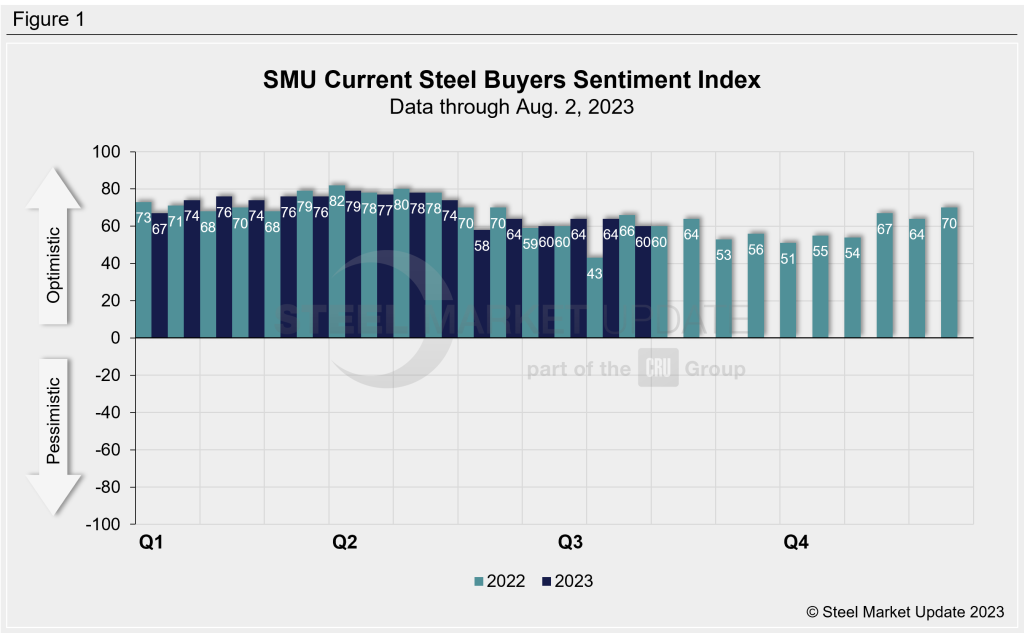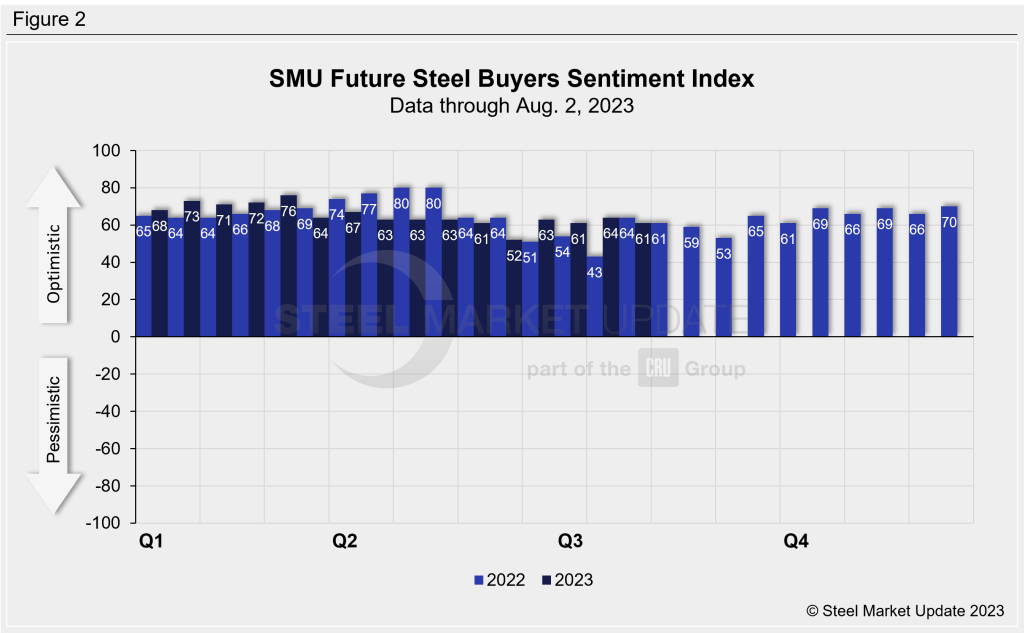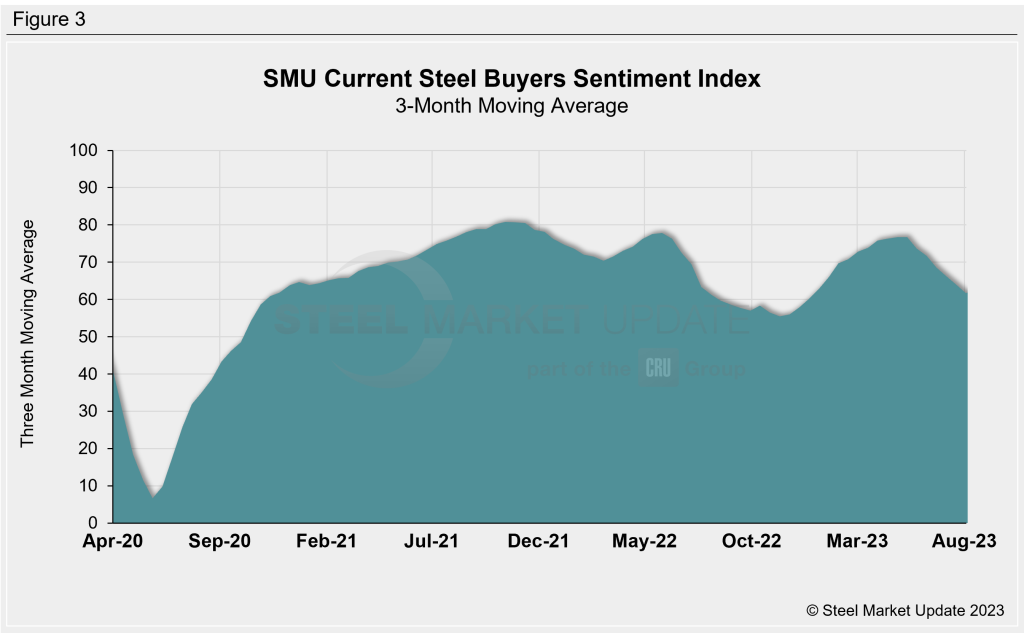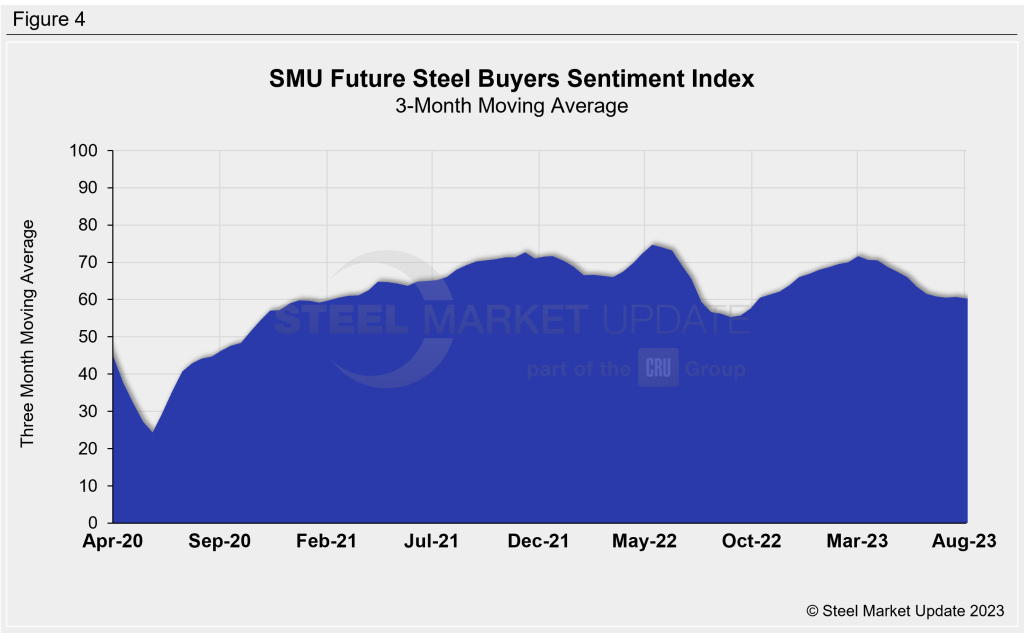Market Segment
August 4, 2023
Current, Future Sentiment Indices Slip
Written by Ethan Bernard
SMU’s Current and Future Steel Buyers Sentiment Indices have both fallen this week from the last market check, according to our most recent survey data.
Every other week we poll steel buyers about sentiment. The Steel Buyers Sentiment Indices measure how steel buyers feel about their company’s chances of success in the current market, as well as three to six months down the road. We have historical data going back to 2008.
SMU’s Current Buyers Sentiment Index stood at +60 this week, down from +64 two weeks earlier . (Figure 1). After falling from the 70s to +58 at the end of May, current sentiment has been hovering in the low- to mid-60s.

SMU’s Future Buyers Sentiment Index measures buyers’ feelings about business conditions three to six months in the future. This week, the index dropped three points to +61 vs. two weeks prior (Figure 2). The future index last cracked the 70 mark at the beginning of March.

Measured as a three-month moving average, the Current Sentiment 3MMA fell to +61.67 from +64 at the last market check. (Figure 3).

This week’s Future Sentiment 3MMA was +60.33, edging down slightly from +60.67 two weeks earlier (Figure 4).

What SMU Survey Respondents Had to Say:
-“Pricing pressures are real.”
-“We can get some orders and buys but they are not large.”
-“Once prices bottom out, then more orders will be placed.”
-“Customers running with low inventory, and given we can ship quickly, they in general are giving us orders for only what they know they can sell.”
-“Future demand seems to be improving over current demand.”
-“Contract buying has increased, some spot buying has returned to the market, and automotive is good coming out of their outages.”
About the SMU Steel Buyers Sentiment Index
The SMU Steel Buyers Sentiment Index measures the attitude of buyers and sellers of flat-rolled steel products in North America. It is a proprietary product developed by Steel Market Update for the North American steel industry. Tracking steel buyers’ sentiment is helpful in predicting their future behavior.
Positive readings run from +10 to +100. A positive reading means the meter on the right-hand side of our home page will fall in the green area indicating optimistic sentiment. Negative readings run from -10 to -100. They result in the meter on our homepage trending into the red, indicating pessimistic sentiment. A reading of “0” (+/- 10) indicates a neutral sentiment (or slightly optimistic or pessimistic), which is most likely an indicator of a shift occurring in the marketplace. Sentiment is measured via SMU surveys twice per month.
Click here to view an interactive graph







